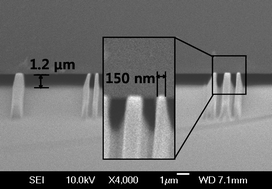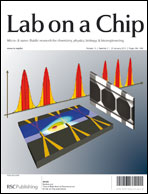Simple fabrication of hydrophilic nanochannels using the chemical bonding between activated ultrathin PDMS layer and cover glass by oxygen plasma†
Abstract
This study describes a simple and low cost method for fabricating enclosed transparent hydrophilic nanochannels by coating low-viscosity PDMS (monoglycidyl ether-terminated polydimethylsiloxane) as an adhesion layer onto the surface of the nanotrenches that are molded with a urethane-based UV-curable


 Please wait while we load your content...
Please wait while we load your content...